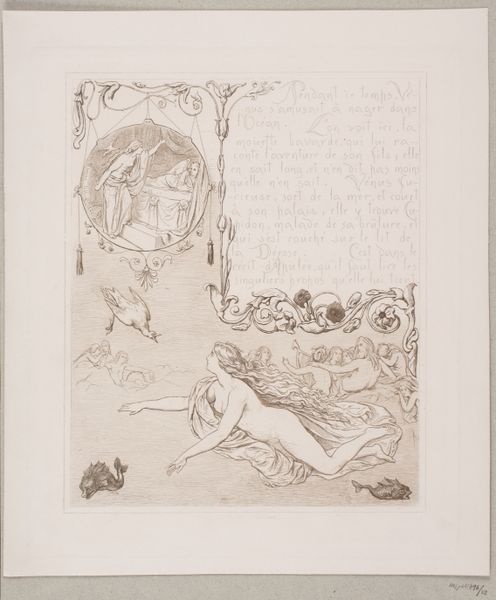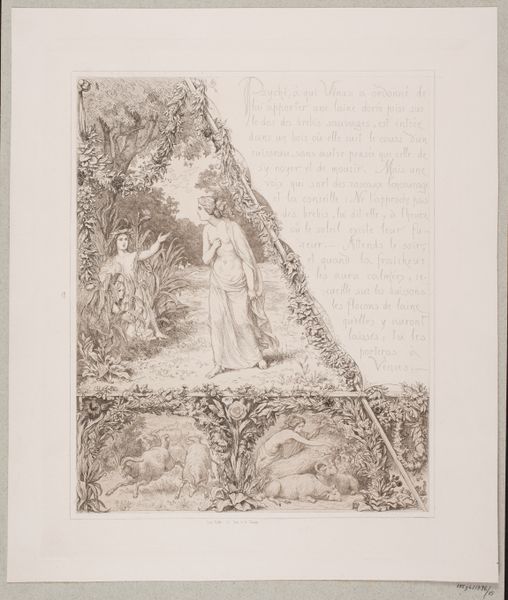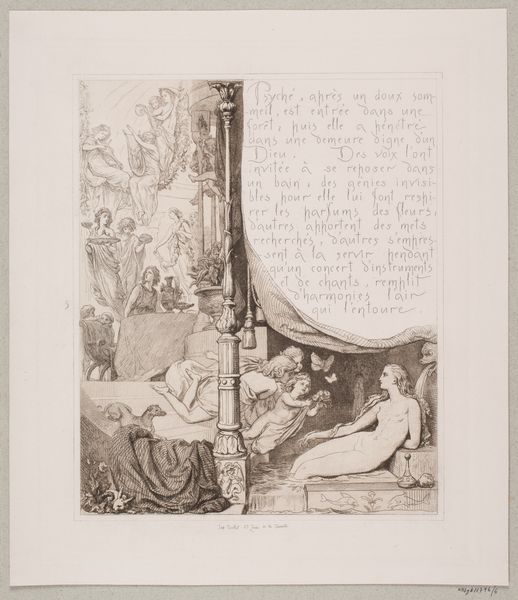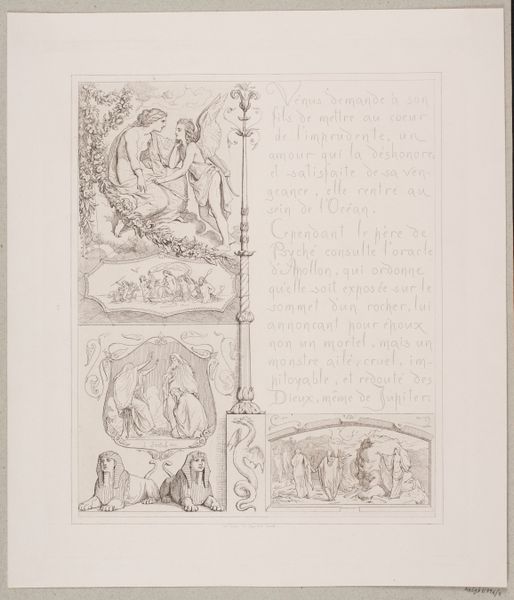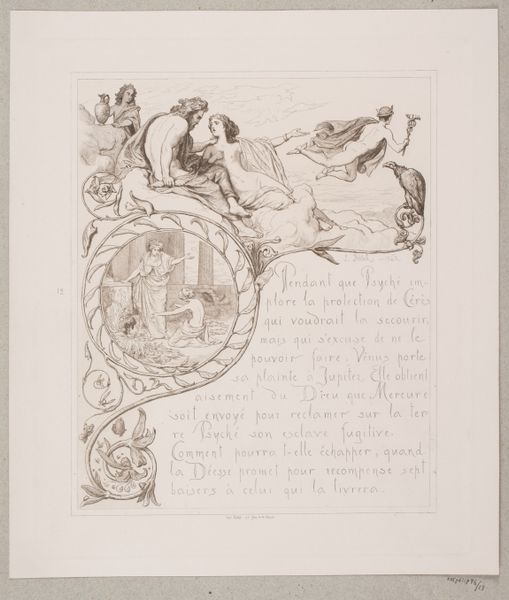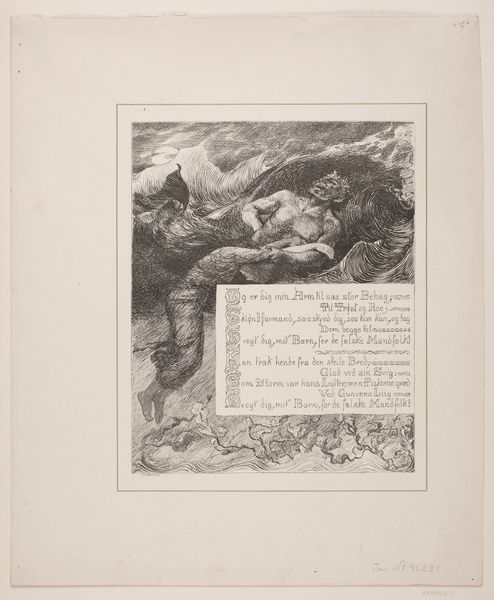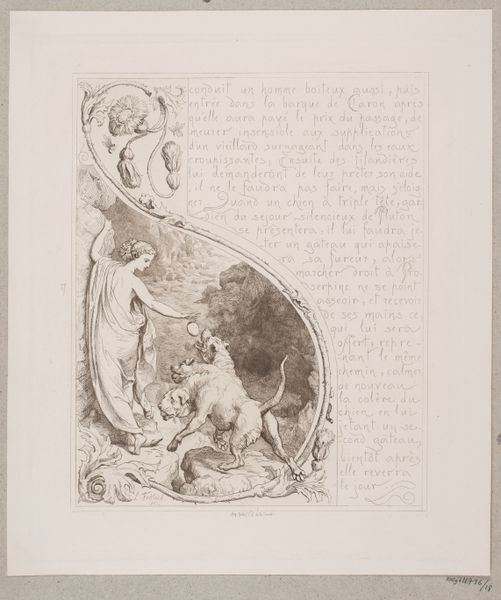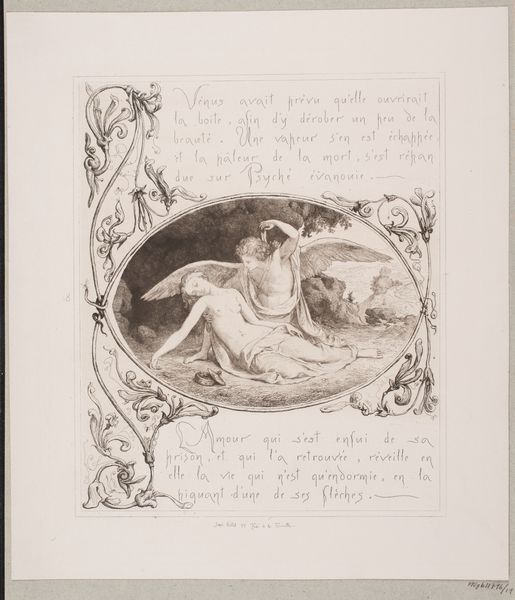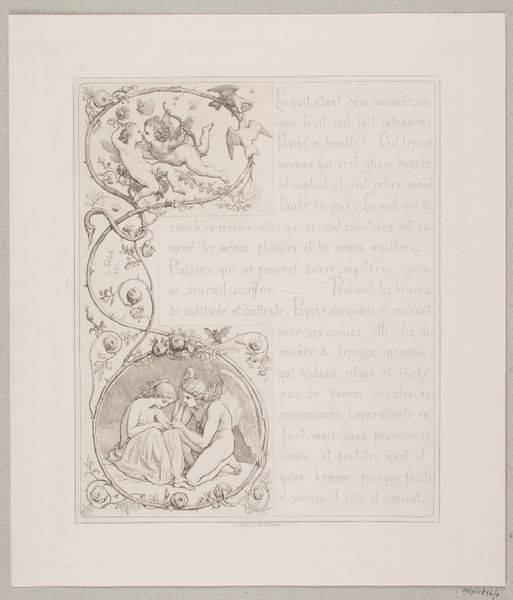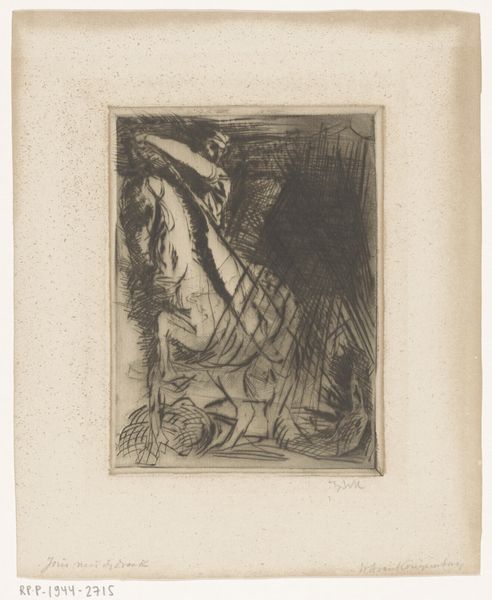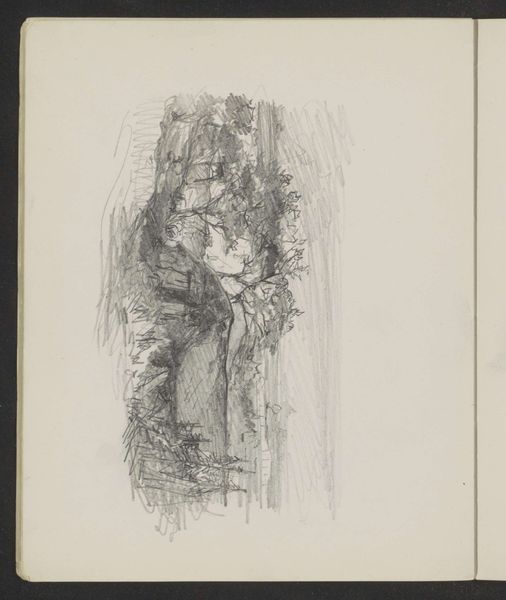
Dimensions: 354 mm (height) x 307 mm (width) (bladmaal)
Editor: This is Illustration nr. 15 til "L`Amour et Psyché" by Lorenz Frølich, from 1862. It's a print, seemingly an engraving. The scene is quite romantic and fantastical. What strikes you most about it? Curator: I see a complex interplay of power dynamics and societal expectations projected onto the classical myth. Notice how Psyche, a woman, is tasked with an impossible feat: collecting water from a source guarded by dragons. How does this relate to 19th-century views of women and their roles? Editor: Well, she is going to face her fears and she has agency, right? Curator: Absolutely, but is her agency entirely her own? Her actions are framed within the context of divine commands and societal pressures. She's compelled by the narrative to fulfill this task, and she ultimately needs a male god's intervention (Jupiter's eagle) to succeed. This is linked to the cultural expectation of women and the constant pressure to act within socially accepted narratives and rules. Editor: So you're saying even within this romantic idealization, there are subtle constraints depicted? Curator: Precisely! The seemingly empowering act of Psyche completing her quest is still underscored by her dependence on external forces, reinforcing a hierarchical structure of power. Where do you see this reflected in the composition? Editor: I think in how small she is in comparison to the overall image. There is something disempowering about the frame, too, with all that text that feels controlling. Curator: Exactly! Seeing how artists both reflected and subtly critiqued societal norms within these mythic tales is insightful. The combination of image and text works together in order to provide further meaning to Psyche's trial. Editor: I see this work now in a totally new light. Curator: It is really amazing to be able to contextualize and critically approach works that are not that widely known and challenge the canonical interpretation.
Comments
No comments
Be the first to comment and join the conversation on the ultimate creative platform.
